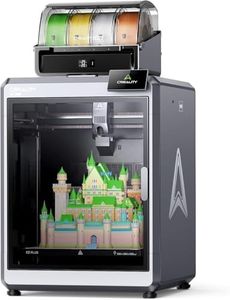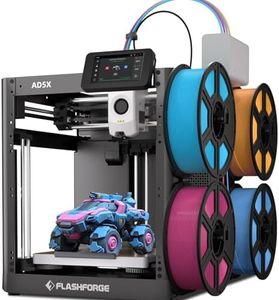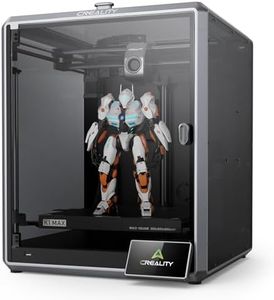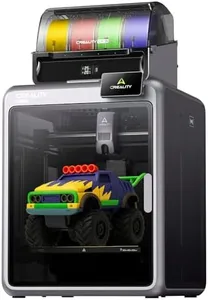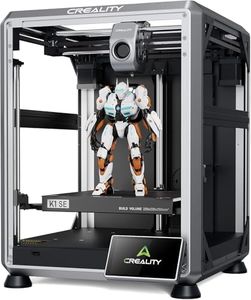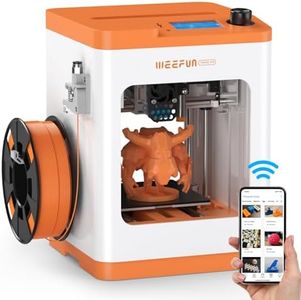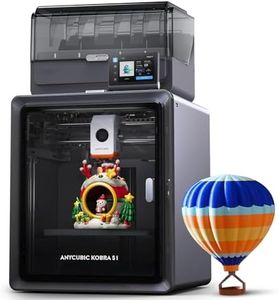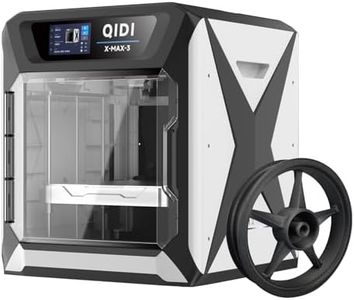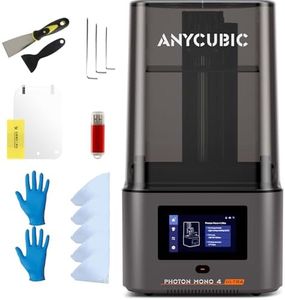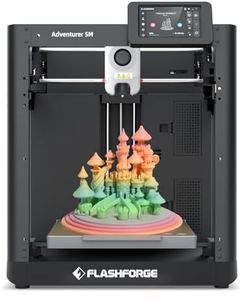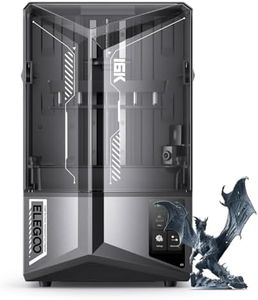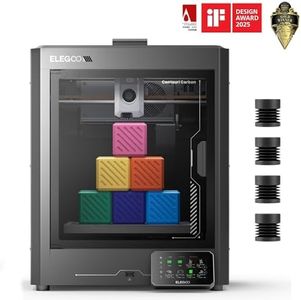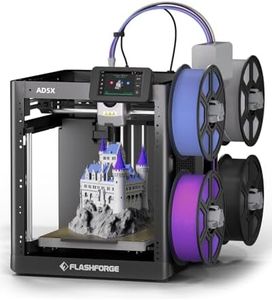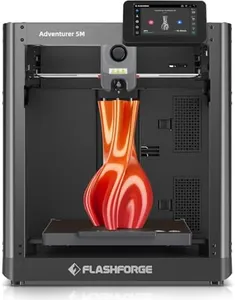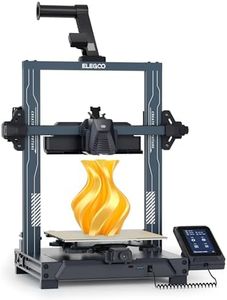We Use CookiesWe use cookies to enhance the security, performance,
functionality and for analytical and promotional activities. By continuing to browse this site you
are agreeing to our privacy policy
10 Best 3D Printers
From leading brands and best sellers available on the web.By clicking on a link to a third party's website, log data is shared with that third party.
Buying Guide for the Best 3D Printers
Choosing the right 3D printer can be a transformative experience, whether you're a hobbyist, educator, or professional. The key is to understand your specific needs and how different features of a 3D printer can meet those needs. Consider what you plan to print, the materials you want to use, and the level of detail you require. This will guide you in selecting a printer that offers the right balance of quality, speed, and ease of use.Print Technology3D printers use different technologies to create objects, with the most common being Fused Deposition Modeling (FDM) and Stereolithography (SLA). FDM printers are generally more affordable and suitable for larger, less detailed prints, making them ideal for beginners and general use. SLA printers, on the other hand, use a laser to cure resin and are better for high-detail prints, which is great for professionals or those needing intricate designs. Choose based on the level of detail and type of projects you plan to undertake.
Build VolumeBuild volume refers to the maximum size of an object that a 3D printer can produce. It's important because it determines the scale of your projects. Smaller build volumes are sufficient for miniatures or small parts, while larger volumes are necessary for bigger models or multiple parts at once. Consider the size of the objects you want to print and ensure the printer can accommodate them.
Layer ResolutionLayer resolution is the thickness of each layer of material that the printer lays down, measured in microns. A lower number means finer detail and smoother surfaces. For high-detail work, such as jewelry or detailed prototypes, look for a printer with a lower layer resolution. For less detailed work, such as basic prototypes or functional parts, a higher layer resolution is sufficient.
Print SpeedPrint speed indicates how fast a printer can produce an object. Faster speeds can save time, but may compromise on quality. If you need quick prototypes or are working on large projects, a higher print speed is beneficial. However, for detailed work where quality is paramount, a slower speed might be necessary to ensure precision.
Material CompatibilityDifferent 3D printers support different materials, such as PLA, ABS, PETG, or resin. The choice of material affects the strength, flexibility, and finish of the printed object. Consider what properties you need in your prints. For example, PLA is easy to use and biodegradable, making it great for beginners, while ABS is more durable and heat-resistant, suitable for functional parts.
Ease of UseEase of use encompasses the setup process, software interface, and maintenance requirements of a 3D printer. Beginners might prefer a printer with a straightforward setup and user-friendly software. More advanced users might be comfortable with a more complex machine that offers greater control over print settings. Consider your level of expertise and how much time you're willing to invest in learning and maintaining the printer.
ConnectivityConnectivity options, such as USB, SD card, Wi-Fi, or Ethernet, determine how you can send files to the printer. Wi-Fi and Ethernet allow for remote printing and monitoring, which can be convenient for busy environments or when managing multiple printers. If you prefer a simple setup, USB or SD card might be sufficient. Choose based on how you plan to integrate the printer into your workflow.
